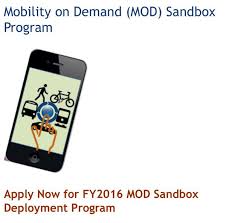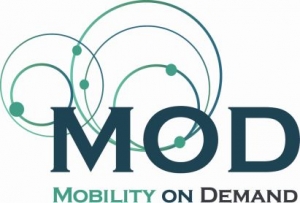
In a world of drone package delivery and self-driving cars, it’s clear that all kinds of everyday activities are being impacted by technology. That’s especially true when it comes to transportation.
Mobile app-based ridesharing is a trend that has tremendous energy behind it … and, it has created a few road bumps along the way. The taxi industry has definitely been impacted as well as public transit authorities. With ridesharing services available at the tap of a button, many public transit users are trading fare cards for mobile apps.
That may change though. A new Federal Transit Administration (FTA) program could pave the way for a new era of collaboration between public transportation services and private- sector ridesharing companies.
 The FTA recently launched a new program that provides funds for integrating new transportation technologies into existing public transit options. The program, known as the Mobility on Demand (MOD) sandbox, signals a shift in public transportation. It encourages and incentivizes ridesharing companies to collaborate and work with public transit authorities.
The FTA recently launched a new program that provides funds for integrating new transportation technologies into existing public transit options. The program, known as the Mobility on Demand (MOD) sandbox, signals a shift in public transportation. It encourages and incentivizes ridesharing companies to collaborate and work with public transit authorities.
The objective is to use mobility-on-demand options to connect people to public transit options such as trains and buses. FTA administrators confirmed $2 million of available funding for the program and the FTA website states an availability of up to $8 million.
Funding will flow to state and local transportation agencies for mobility-on-demand demonstration projects. The pilot programs should result in innovative approaches to mobility-on-demand solutions tied to public transit. Eligible partners may include private for-profit or not-for-profit organizations, transportation service operators and/or state and local government entities.
Administrators from the FTA want the projects to be replicable in other communities nationwide. Several local transportation agencies are already working on integrating mobility-on-demand services into existing public transit systems.
In St. Petersburg, Fla., a transportation agency is subsidizing ridesharing trips. The agency pays for half of all ridesharing trips that begin or end at a transit stop and they do this to encourage ridership, particularly in low-income areas. The program justifies the cost because if the program is successful, the agency can save money that would have otherwise been spent to fund additional bus routes.
Other communities in Florida have implemented similar programs. Students at one university worked with the college’s administration to subsidize 50 percent of ridesharing trips during late-night hours within the campus area. The program creates a more comprehensive transportation network and reduces drunk driving incidents late at night when many public transportation options are not operating.
Kansas City, Mo., is also implementing mobility-on-demand programs. The city has partnered with an automotive company and a private bus ridesharing company to offer on-demand shuttles. The program allows residents to use a smartphone-connected network of passenger vans that carry commuters throughout the city. The program is much less costly than the cost of adding additional routes.
In Dallas, public transportation agencies are also incorporating ridesharing services into mobile applications. Commuters using a public transit app to purchase bus and rail passes can easily click through to hail a ridesharing service. The collaboration is an effort to create more complete trips and allow commuters who may not be near a transit station to utilize transit services.
The future of transportation is evolving quickly and big changes are predicted in the near future. The FTA’s Mobility on Demand Sandbox program is worth consideration. It offers a way for public transit authorities to collaborate with private-sector partners. It is definitely an idea worth testing!
SPI’s team of procurement consultants are experts in public-private collaboration. Contact them today.
